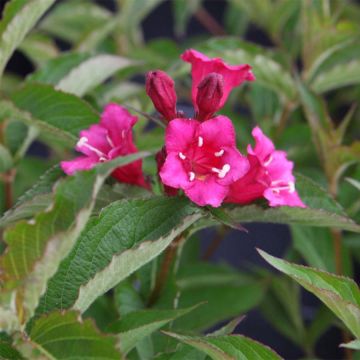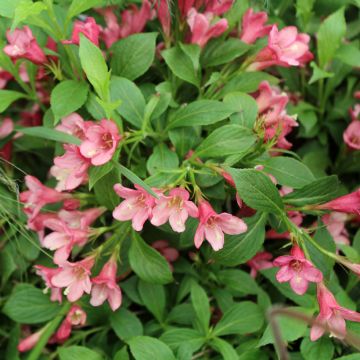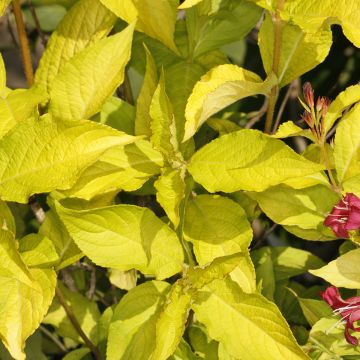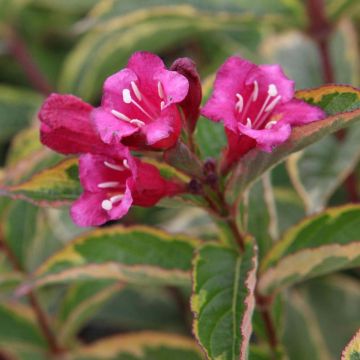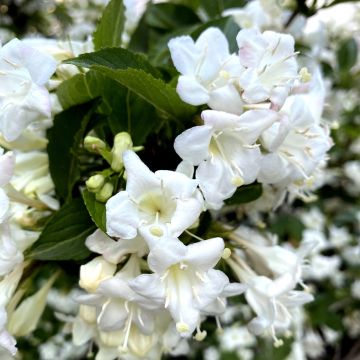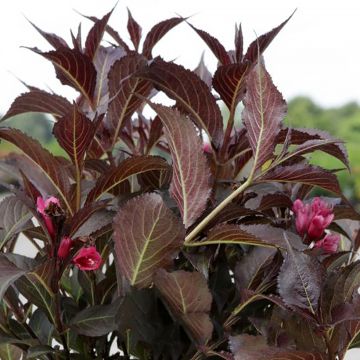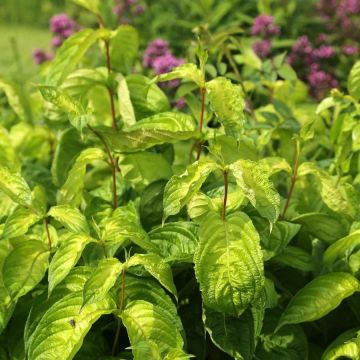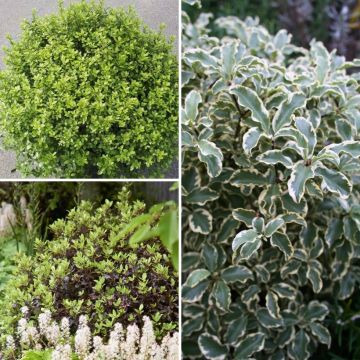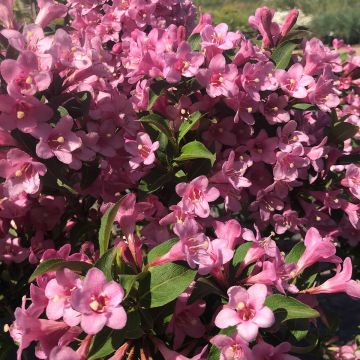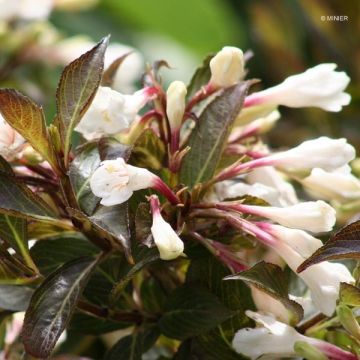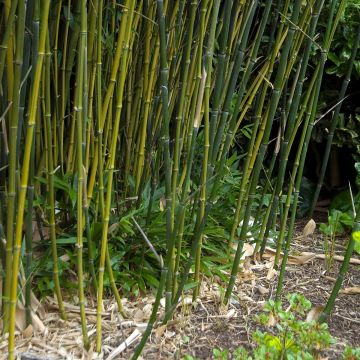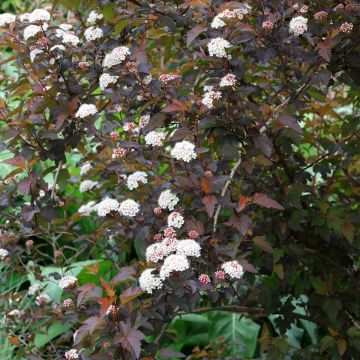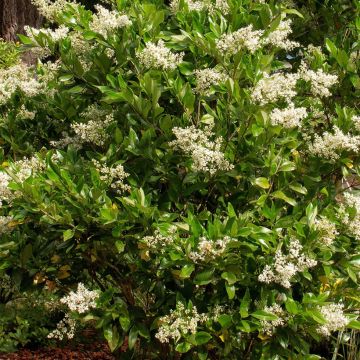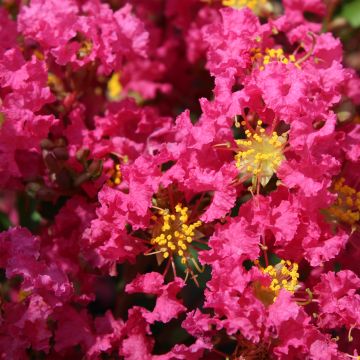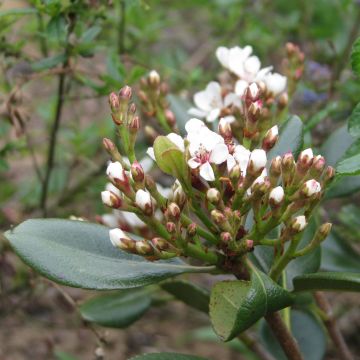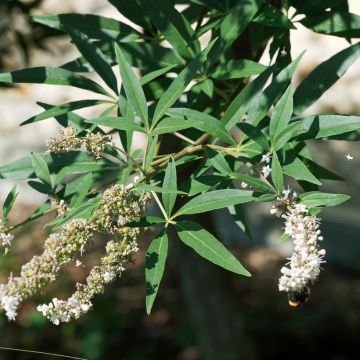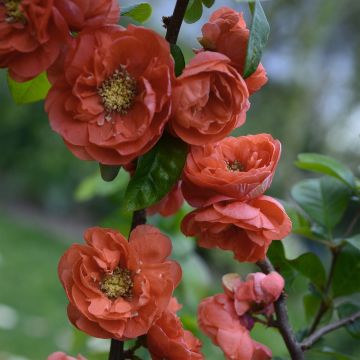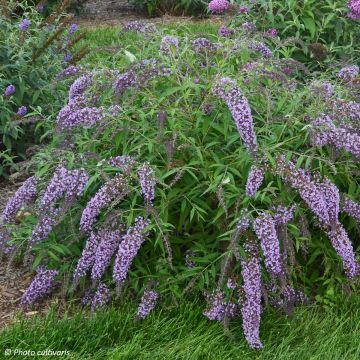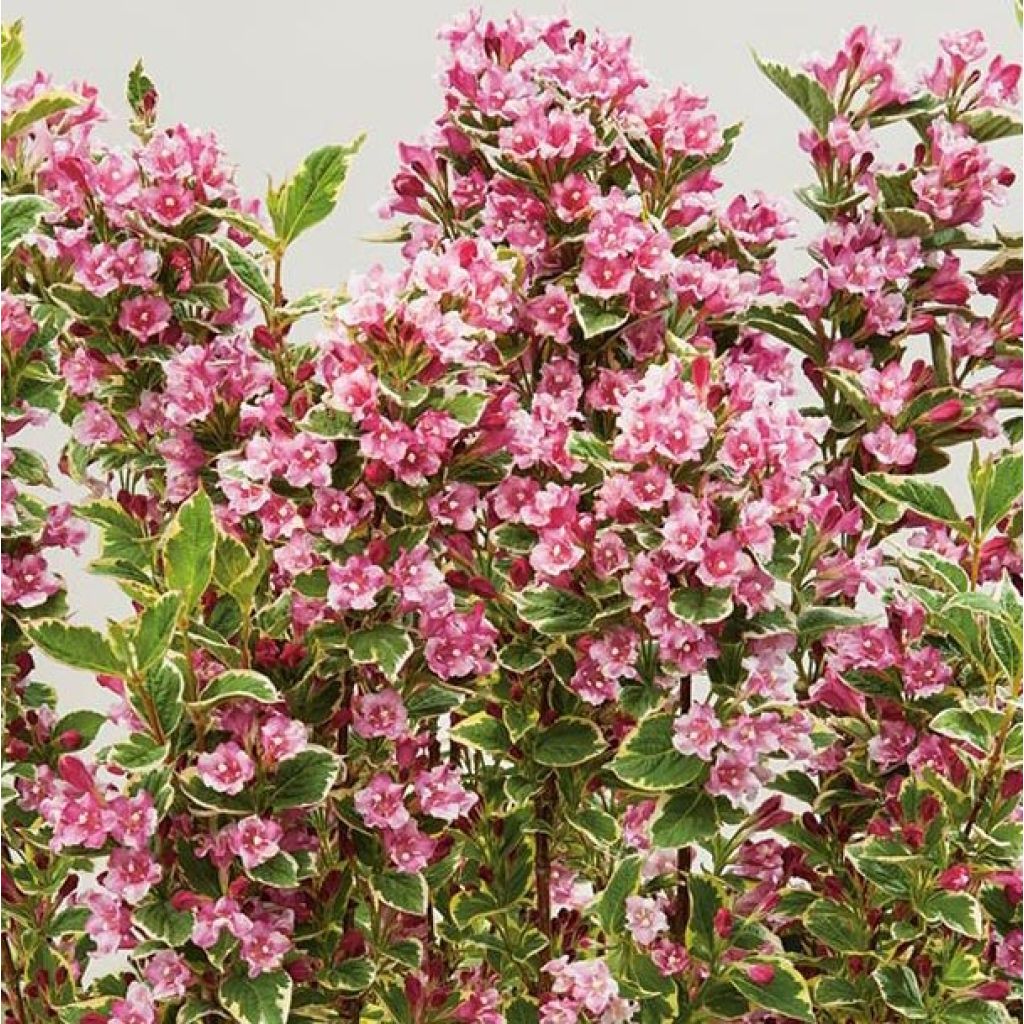

Weigela Kosteriana Variegata
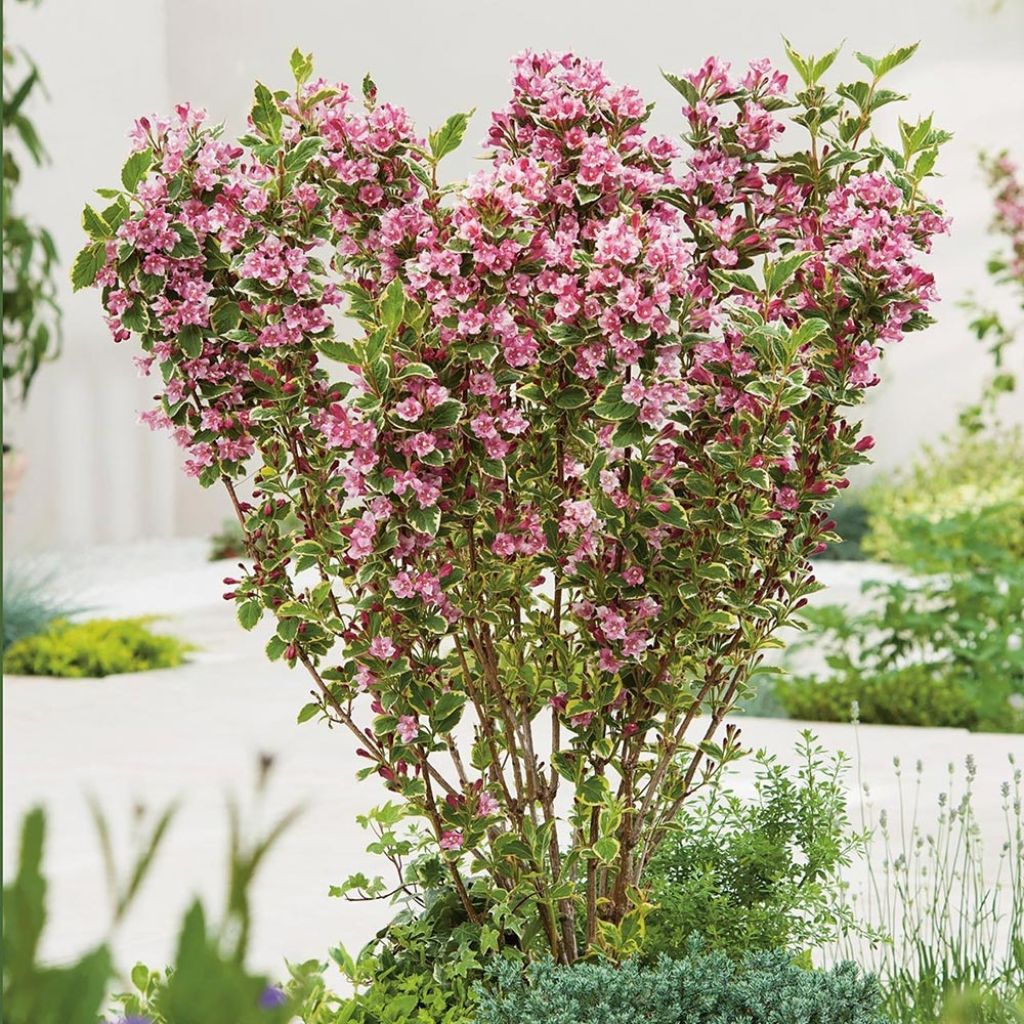

Weigela Kosteriana Variegata
Weigela Kosteriana Variegata
Weigela Kosteriana Variegata
Old-fashioned Weigela
Took root well but no flowers this summer, hoping to see the flowering next year...
Evelyne, 12/10/2024
This item cannot be shipped to the selected country
Delivery charge from €5.90
More information
Delivery charge from €5.90
More information
Schedule delivery date,
and select date in basket
This plant carries a 24 months recovery warranty
More information
We guarantee the quality of our plants for a full growing cycle, and will replace at our expense any plant that fails to recover under normal climatic and planting conditions.
From €5.90 for pickup delivery and €6.90 for home delivery
Express home delivery from €8.90.

Does this plant fit my garden?
Set up your Plantfit profile →
Description
Weigela 'Kosteriana Variegata' is a remarkable shrub with an upright and compact habit, deciduous dark green foliage marginated with ivory-white, and adorned with soft pink trumpet-shaped flowers from July to August. This low-maintenance summer shrub can be planted in a rustic or romantic flower bed or flowering hedge, or even in a large pot on the terrace. It will bring a gentle floral note to the middle of summer.
Weigela Kosteriana are hybrids obtained through cross-breeding of horticultural varieties and belong to the Caprifoliaceae family. Weigelas, commonly but incorrectly called Weigelias, are native to Eastern Asia: Japan, Korea, and northeastern China. The 'Kosteriana Variegata' cultivar, also known as Weigela florida 'Kosteri Variegata', is an upright and compact shrub that can reach a height of 2 m (7 ft) with a spread of 1.6 m (5 ft). Its dark green leaves, with ivory-white edges, are lanceolate in shape with undulating margins and possess lighter veins. In autumn, its foliage will turn yellow-orange before falling. Between the months of June and August, the shrub will develop beautiful bell-shaped flowers in soft shades of pink, creating a superb gradation. The funnel-shaped flowers have a darker throat and are borne in corymbs at the ends of the previous year's branches. This flowering is melliferous and nectariferous. This calcicolous (preferring calcareous soils) shrub has a fibrous and spreading root system, which is perfectly suited for transplantation. The branches of this shrub are arched and have two rows of hairs.
Very hardy (-20 °C (-4 °F)), it can be grown in flower beds, flowering hedges, or as a standalone plant. It pairs well with grasses, salvias, or even abelias. Easy to grow, it likes well-drained and poor or rich soils. It can be grown in sunny or semi-shaded positions.
Hardy down to -20 °C (-4 °F), Weigela 'Kosteriana Variegata' is one of those shrubs that thrives in most regions, except for the hottest and driest ones. It enjoys sunny or semi-shaded locations, in any fresh but well-drained and even relatively dry soil. Its dense and bushy habit makes it a graceful shrub suitable for gardens of all sizes. The combination of foliage and flower colours is far from dull, bringing a very personal touch to any decor and allowing for the creation of large, vibrant borders along a path or a short grass meadow, in combination with, for example, purple barberries. In a flower bed, companions such as Galega, blood-red or variegated dogwoods, ornamental brambles, Physocarpus, symphorines, or even a Buddleia Nanho Blue with blue-mauve flowers can be chosen. In the background, the very dark foliage of hollies or yews will provide a dark setting for its luminous foliage and ensure a beautiful winter display. This Weigela can also be grown in a container to attract attention in small gardens or trained on a small trellis.
Weigela Kosteriana Variegata in pictures
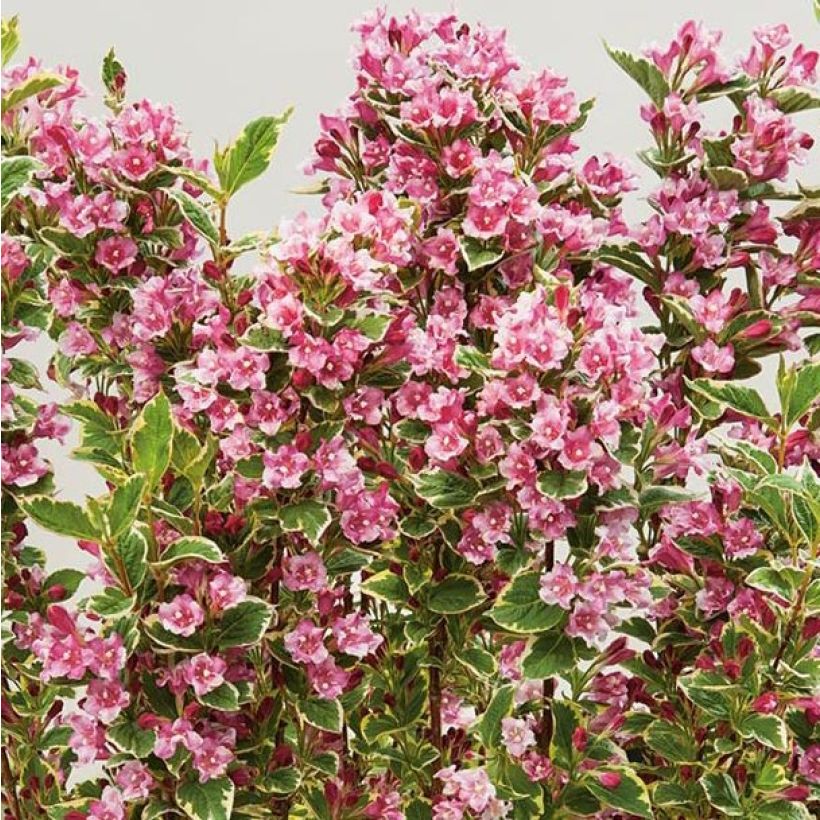

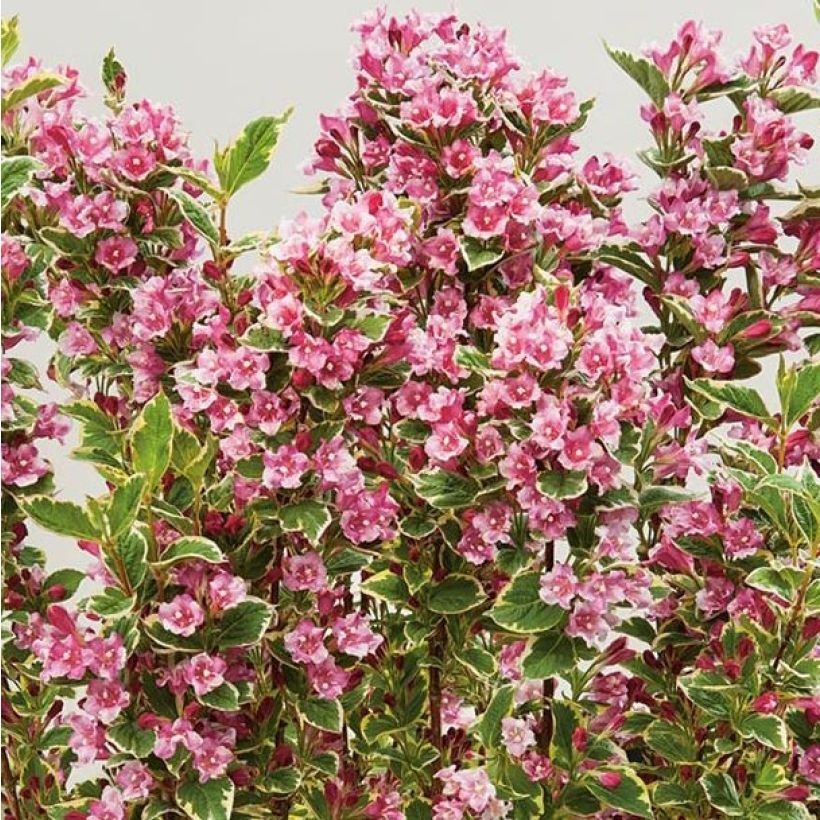

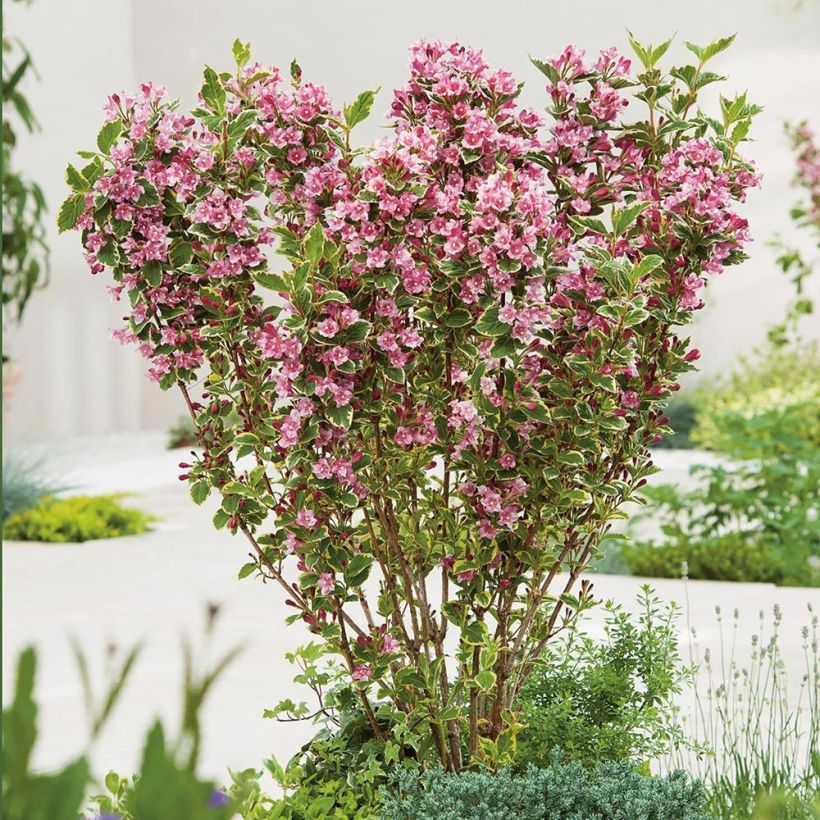

Plant habit
Flowering
Foliage
Botanical data
Weigela
Kosteriana Variegata
Caprifoliaceae
Old-fashioned Weigela
Cultivar or hybrid
Other Weigela
Planting and care
Hardy down to -20 °C (-4 °F), Weigela 'Kosteriana Variegata' thrives in sunny or semi-shaded positions. Plant it in a moist soil from October to March (excluding frost periods). To maintain a compact habit and promote abundant flowering, in winter shorten the branches that have produced flowers by 2/3.
Planting period
Intended location
Care
-
, onOrder confirmed
Reply from on Promesse de fleurs
Hedge shrubs
Haven't found what you were looking for?
Hardiness is the lowest winter temperature a plant can endure without suffering serious damage or even dying. However, hardiness is affected by location (a sheltered area, such as a patio), protection (winter cover) and soil type (hardiness is improved by well-drained soil).

Photo Sharing Terms & Conditions
In order to encourage gardeners to interact and share their experiences, Promesse de fleurs offers various media enabling content to be uploaded onto its Site - in particular via the ‘Photo sharing’ module.
The User agrees to refrain from:
- Posting any content that is illegal, prejudicial, insulting, racist, inciteful to hatred, revisionist, contrary to public decency, that infringes on privacy or on the privacy rights of third parties, in particular the publicity rights of persons and goods, intellectual property rights, or the right to privacy.
- Submitting content on behalf of a third party;
- Impersonate the identity of a third party and/or publish any personal information about a third party;
In general, the User undertakes to refrain from any unethical behaviour.
All Content (in particular text, comments, files, images, photos, videos, creative works, etc.), which may be subject to property or intellectual property rights, image or other private rights, shall remain the property of the User, subject to the limited rights granted by the terms of the licence granted by Promesse de fleurs as stated below. Users are at liberty to publish or not to publish such Content on the Site, notably via the ‘Photo Sharing’ facility, and accept that this Content shall be made public and freely accessible, notably on the Internet.
Users further acknowledge, undertake to have ,and guarantee that they hold all necessary rights and permissions to publish such material on the Site, in particular with regard to the legislation in force pertaining to any privacy, property, intellectual property, image, or contractual rights, or rights of any other nature. By publishing such Content on the Site, Users acknowledge accepting full liability as publishers of the Content within the meaning of the law, and grant Promesse de fleurs, free of charge, an inclusive, worldwide licence for the said Content for the entire duration of its publication, including all reproduction, representation, up/downloading, displaying, performing, transmission, and storage rights.
Users also grant permission for their name to be linked to the Content and accept that this link may not always be made available.
By engaging in posting material, Users consent to their Content becoming automatically accessible on the Internet, in particular on other sites and/or blogs and/or web pages of the Promesse de fleurs site, including in particular social pages and the Promesse de fleurs catalogue.
Users may secure the removal of entrusted content free of charge by issuing a simple request via our contact form.

































